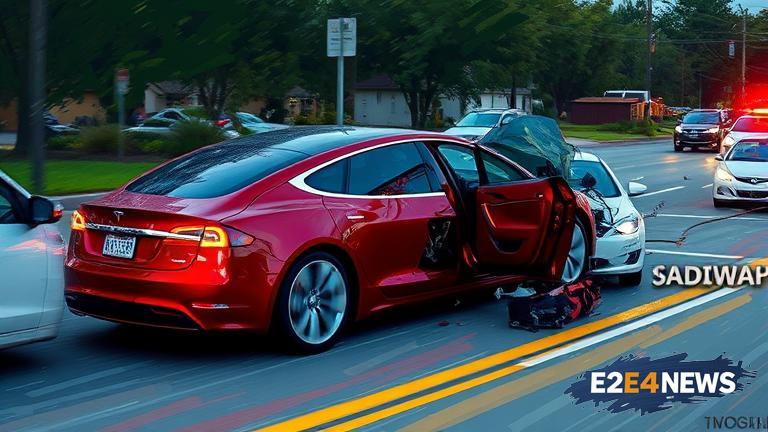A thorough investigation into a fatal crash involving a Tesla vehicle equipped with Autopilot has concluded that the system was partially to blame for the accident. The incident, which occurred in 2019, resulted in the loss of life and raised questions about the safety and reliability of semi-autonomous vehicles. According to the investigation, the Autopilot system failed to detect the presence of a pedestrian, leading to a collision. The findings of the investigation have sparked widespread concern and debate over the use of Autopilot and similar systems in vehicles. The incident has also led to a renewed focus on the development of more advanced safety features and the need for stricter regulations governing the use of semi-autonomous vehicles. Tesla has faced criticism for its handling of the incident, with some arguing that the company has been too slow to address concerns over the safety of its Autopilot system. The investigation’s findings have also raised questions about the role of human error in the accident, with some suggesting that the driver may have been distracted or inattentive at the time of the crash. Despite these concerns, Tesla has maintained that its Autopilot system is safe and that the incident was an isolated one. However, the company has also acknowledged the need for continued improvement and has pledged to implement additional safety features in its vehicles. The incident has also highlighted the need for greater transparency and accountability in the development and deployment of semi-autonomous vehicles. As the use of these vehicles becomes more widespread, there is a growing need for stricter regulations and safety standards to ensure that they are used safely and responsibly. The investigation’s findings have significant implications for the future of the automotive industry, with many experts predicting that the use of semi-autonomous vehicles will become increasingly common in the coming years. However, the incident has also raised concerns about the potential risks and challenges associated with the use of these vehicles, and the need for continued research and development to address these concerns. In response to the investigation’s findings, Tesla has announced plans to implement a number of safety upgrades to its Autopilot system, including improved pedestrian detection and enhanced driver monitoring. The company has also pledged to provide more detailed information to drivers about the capabilities and limitations of its Autopilot system. The incident has also sparked a wider debate about the ethics of semi-autonomous vehicles, with some arguing that they have the potential to save lives and reduce the risk of accidents, while others have raised concerns about the potential risks and unintended consequences of their use. As the investigation into the fatal crash continues, it is clear that the use of semi-autonomous vehicles will be subject to increasing scrutiny and regulation in the coming years. The incident has highlighted the need for a more nuanced and informed discussion about the benefits and risks of these vehicles, and the need for continued research and development to ensure that they are used safely and responsibly. The use of semi-autonomous vehicles is likely to become increasingly common in the coming years, and it is essential that we prioritize their safe and responsible development and deployment. The investigation’s findings have significant implications for the future of the automotive industry, and it is clear that the use of semi-autonomous vehicles will be subject to increasing scrutiny and regulation in the coming years. The incident has also raised concerns about the potential risks and challenges associated with the use of these vehicles, and the need for continued research and development to address these concerns. In conclusion, the investigation into the fatal crash involving a Tesla vehicle equipped with Autopilot has highlighted the need for greater transparency and accountability in the development and deployment of semi-autonomous vehicles. The incident has also sparked a wider debate about the ethics of semi-autonomous vehicles, and the need for continued research and development to ensure that they are used safely and responsibly.
